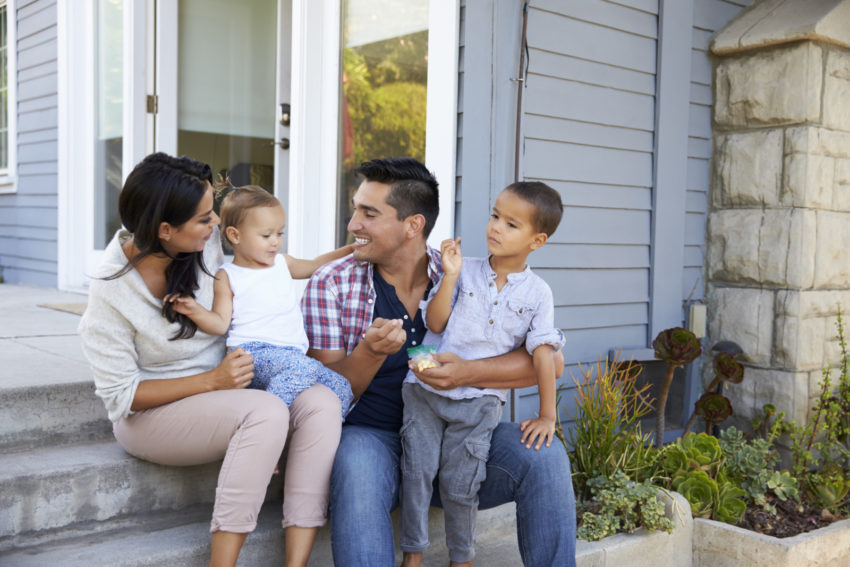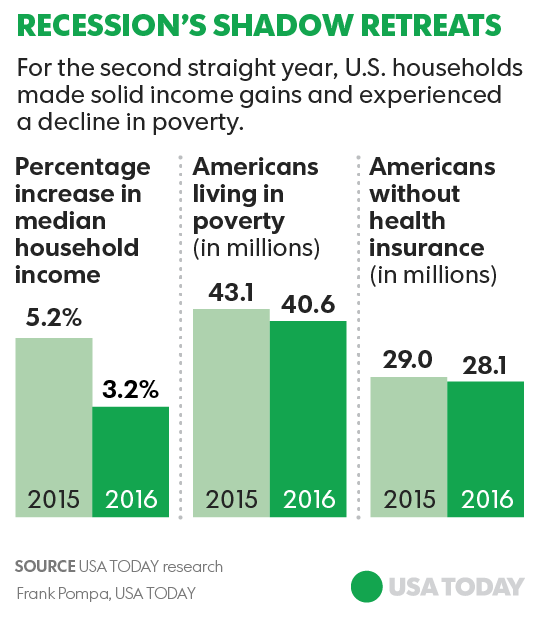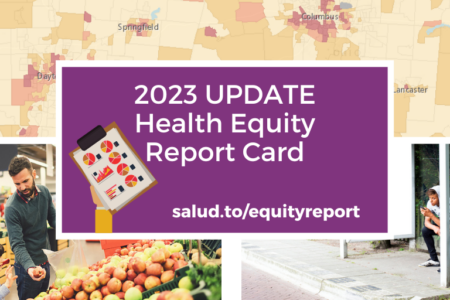
Share On Social!
Many Latino families suffer a big lack of access to support for economic and educational success, and quality healthcare. This makes it harder for Latino kids to achieve academically, socially, and physically.
However, hope appears to be on the horizon for Latino and all families, according to U.S. Census Bureau data.
For the second year in a row, Americans made “solid” financial gains in 2016 as the median household income rose across the country. Also shown as positive signs were the poverty numbers fell, and the rate people without health insurance also fell, according to USA Today.
 U.S. Economy on the Rebound
U.S. Economy on the Rebound
The median U.S. household income climbed 3.2% to $59,039, which followed growth of 5.2% in 2015; this is the largest on records dating to 1968. The combined increase over the past two years is the biggest such rise since the 1960s.
These numbers, according analysts, point to the end of the “stagnation” that had lingered economically in the U.S. since the Great Recession of the late 2000s.
“Real median household income has finally completed its nine-year slog of digging out of the ditch,” economist Chris Christopher told USA Today.
In terms of income, the median, inflation-adjusted income of $59,000 last year surpassed the level in 1999, which is the highest on record.
Poverty and the Impact on Latinos
Income growth was broad-based across all racial groups.
The median income for whites increased by 2% to $65,000; for blacks, by 5.7% to $39,500; and for Latinos by 4.3% to $47,700.
“The solid economy is helping to close the racial gap,” economist Jared Bernstein told USA Today. “The tight labor market is prodding employers to hire lower-skilled and disadvantaged workers who had been left on the sidelines.”
The number of Americans living in poverty fell to 40.6 million from 43.1 million, which lowered the poverty rate to 12.7% from 13.5%, according to the new data.
But poverty remains a big issue.
One of three Latino families live in poverty. Latino kids face a high rate of adverse childhood experiences, like poverty.
“Poverty remains a persistent problem in this country, afflicting tens of millions of people,” said John Bouman, president of the Sargent Shriver National Center on Poverty Law, told USA Today.
Bouman added a warning:
“Tuesday’s Census report comes as the president and congressional Republicans are advancing a cruel policy agenda that would decimate key anti-poverty programs, like federal food assistance and refundable tax credits,” Bouman said. “If those proposals become law, they would undermine the quality of life and chances at upward mobility of millions of struggling Americans.”
Health Coverage and the Impact on Latinos
Another key indicator of the economy’s rebound was measured in the number of people without health insurance. That figure declined by 900,000 to 28.1 million. The share of Americans without coverage dipped to 8.8% from 9.1% the prior year.
Latinos are still the largest uninsured racial and ethnic group in the United States.
The percentage of Latinos with no health care coverage dropped from 26.2% to 15.1% from 2013 to 2016 under the Affordable Care Act (ACA). But it remains much higher than the percent drop among uninsured non-Latino whites from 14.1% to 6.6% in that same span, according to a Salud America! research review.
Learn more about the impact that finances have on health here:
- The Wage Gap for Latino Millennials is Growing http://salud.to/2zeqOFV #SaludIncome
- Latinos Hit Hardest by Housing Market Collapse http://salud.to/2ALhMPi #SaludIncome
By The Numbers
56.9
percent
of Latinos are "housing cost burdened"



